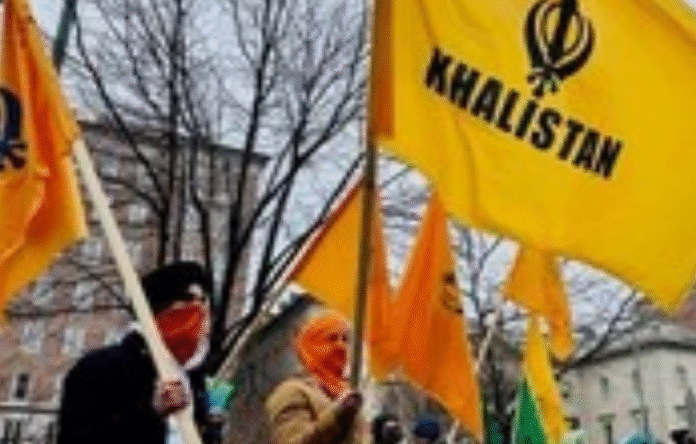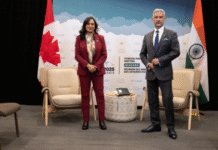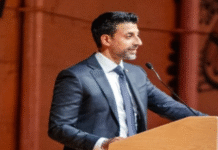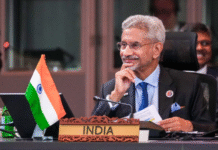OTTAWA– A recent surge in pro-Khalistan imagery and rhetoric in Ontario has reignited debate in Canada over the balance between free expression and public safety, with critics warning that glorification of extremist violence risks undermining international obligations and endangering diplomatic relations.
According to a report in Khalsa Vox, social media videos showed a Canadian trucker displaying a poster of Dilawar Singh, the suicide bomber who assassinated Punjab Chief Minister Beant Singh and 17 others in 1995. The depiction of Singh as a “martyr,” the report argued, amounted to celebrating terrorism.
At the Khalsa Nagar Kirtan parade in Malton, organized under the banner of Sikhs for Justice (SFJ) — a group banned in India — posters carried violent imagery, including messages targeting India’s newly appointed High Commissioner to Canada, Dinesh Patnaik. SFJ has long operated in Canada as a hub for propaganda campaigns and intimidation of Indian officials.
“The Vienna Convention on Diplomatic Relations obligates host countries to protect foreign envoys from any attack on their person, freedom, or dignity,” the report stated. “When posters at a public parade depict a sitting High Commissioner as a target, and the authorities fail to act, it is not merely a lapse in law enforcement — it is a diplomatic breach.”
The report urged Canadian authorities to investigate such incidents as possible violations of law rather than dismiss them as community disputes. “Politicians must resist the temptation to pander to fringe voices at the expense of public safety and Canada’s international reputation,” it added.
Indian officials have repeatedly raised concerns with Ottawa about the growing visibility of Khalistan-linked activities, particularly when they include threats to diplomats. Critics argue that public glorification of figures like Dilawar Singh risks normalizing political violence and sends a signal of permissiveness to extremist groups worldwide.
“The choice is not between free speech and public safety — it is about ensuring both,” the report concluded. “When imagery and rhetoric cross into glorifying murderers or directly threatening individuals, they cease to be mere political speech. They become incitement.”
The controversy underscores an ongoing challenge for Canadian authorities, who face pressure to safeguard constitutional freedoms while addressing the security and diplomatic fallout of extremist displays on public platforms. (Source: IANS)













